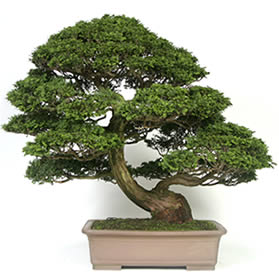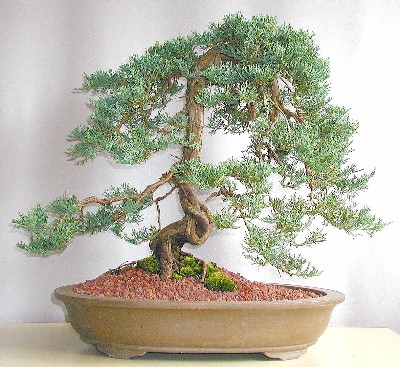Bonsai- A Japanese Art

History
Bonsai first appeared in China over a thousand years ago on a very basic scale. The original Chinese word for bonsai was P’en Tsai, after being adopted by the Japanese its name changed to reflect the Japanese language. Bon, for the pot or tray in which the plant is grown, and sai is the tree or plant being grown, literally translated “tray tree” the art of bonsai has become a symbol of Japanese history and culture over the past 200 years.

Cascade Bonsai Works infromation website
Caring for bonsai plants
Caring for these delicate plants involves three main areas of concern:
- Temperature
- Watering
- Fertilizing
The temperature needed to maintain a health bonsai plant depends solely on the type of plant you are trying to grow. Plants from certain areas will need to be treated with respect for the climate in which they originate. Tropical and Subtropical plants are generally kept as indoor plants due to the fact they don’t respond well to extreme changes in temperature. They will either need to be placed in a greenhouse during the winter or grown exclusively inside.
Some bonsai plants need these extreme temperature changes to induce cold winter dormancy to survive. But, even though these plants are hardy and well adapted to the winter environment, they are much smaller in stature than normal plants of their variety. Therefore they still need a certain amount of protection from sudden temperature changes, wind, and sun-scald. Do some research to determine the specific needs of each plant.
Watering is very important for all plants but even more so for bonsai plants, it is the most critical part of care. There are many things to take into account when watering. Watering should be done early in the morning to allow the leaves to dry before the temperature drops in the evening. This will discourage the formation of certain leaf diseases and things of that nature. Most importantly, take into account the specific needs of your particular variety, this will determine the amount of water that is needed and in what increments it should be applied.
Fertilizer is the final part of care for your bonsai plant. While there is not a specific brand of fertilizer recommended for bonsai plants, there are several types that will promote the areas of growth which you wish to encourage in your plant. Look into the natural habitat and resources normally encountered by your plant to determine the proper mixture and time for application. Once again thorough knowledge of your plant and it’s needs is vital to a successful bonsai creation.

Pruning and maintenance tools
Trimming and Pruning
What makes bonsai a form of art is the extent to which you manipulate a plant into the desired shape by maintaining growth above ground to and balencing it with root growth. The process of shaping begins when the tree is very young and continues throughout the tree’s growth and maturation. For a more information on specific tools and types of pruning and trimming please do research into the art.

Conclusion and References
There are many different forms of bonsai trees and plants that can be grown and manipulated into your own unique form of art and expression. This is only a brief overview of a very interesting and amazingly in depth historical art form. I encourage you all visit the websites below and do some fact finding of your own. Knowledge relating to your specific plant is the most important aspect of bonsai, it will allow you to successfully grow and manipulate your plant into a work of art.
http://www.meehansminiatures.com